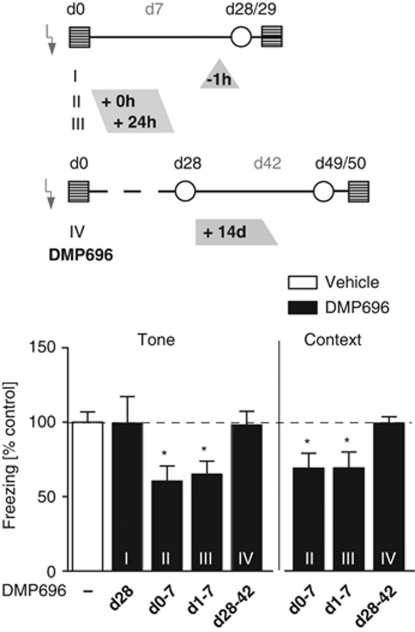Figure 2.
Effects of the CRHR1 antagonist DMP696 on development, expression, and retention of remote fear memories. Treatment with the CRHR1 antagonist DMP696 (3 mg/kg, p.o.) at different time points after foot shock affects consolidation, but not expression and retention of sensitized and contextual fear. Group I, acute drug administration before neutral tone exposure at day 28 after the shock (n (vehicle/DMP696)=12/13); group II, immediate post-foot shock drug treatment lasting for 7 days (twice daily; n=14/13); group III, delayed post-foot shock (+24 h) drug treatment lasting for 7 days (twice daily; n=14/13) and testing on day 28/29; group IV, therapeutic treatment starting 28 days after the foot shock and lasting for 2 weeks (twice daily; n=16/16) followed by a wash-out period of 1 week before testing on day 49/50. Freezing data of DMP696-treated mice were expressed as a percentage of the averaged freezing responses of the respective vehicle-treated controls (dashed line=100%). *p<0.05 (one-sample t-test).

